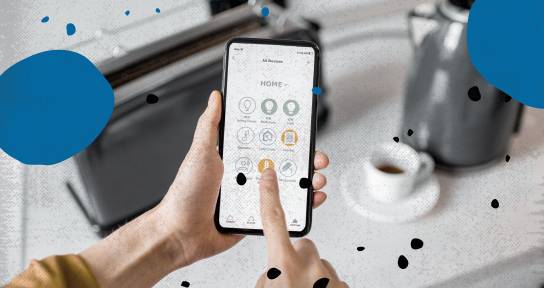Using Cryptocurrencies with the Internet of Things

What is IoT?
Smart technology automates many household and business processes. To do this, individual devices connect to the Internet, synchronize with each other, and process a variety of incoming information, from wearable sensors to smart contracts. For example, a refrigerator can automatically buy certain products, assessing the need to buy items based on changes in the weight of a particular shelf and conducting all transactions without human involvement. Of course, the owner designates the goals by setting conditions i.e., if A, then B.
Limitations of the IoT
In the early 2000s, the Internet of Things faced a number of significant limitations:
- Scalability. Centralized platforms that provided information processing within the IoT could not cope with the traffic density.
- Security. The main weaknesses were the centralized storage of huge amounts of information and the vulnerability of IoT devices to DDoS attacks.
- Compatibility. Manufacturers could not agree on common standards, protocols, and platforms for data processing.
- Cost. The IoT infrastructure required special devices, network equipment, and services for data processing, which was quite expensive.
One of the most pressing problems was centralizing cloud services that processed incoming information from the IoT devices. The transmission of such large amounts of data caused technical difficulties, including:
- network congestion
- the need for large computing power
- long processing times
The solution came with a new technology of decentralized information processing, called Fog Computing. And at this stage, the IoT architecture became easily integrated with blockchain technology.

How Blockchain is Used in the IoT?
Blockchain systems in the IoT act as a universal digital ledger, providing a platform for conducting various peer-to-peer transactions between devices in the complete absence of trust, compensated for by the use of consensus algorithms. In fact, the existing distributed ledgers of major cryptocurrencies are ready-made peer-to-peer networks with tools to process smart contracts.
IoT Cryptocurrencies
The cryptocurrency space’s involvement in the Internet of Things has been growing since 2015, and a boom occurred in 2018 when several dozen such projects entered the ICO stage. The current largest projects are:
- IOTA. The most famous IoT cryptocurrency. Its main function is to provide transactions between machines. The system uses a unique SHA-3 hash function, DAG algorithm and Proof-of-Work consensus technology. The company has been developing the product since 2015 and the process is still far from complete. In 2021, the total capitalization of the IOTA token was almost $2.7 billion.
- IoTeX. This project’s innovation was using multiple subchains, thanks to which the information load of the IoT networks is distributed sustainably. The system is also still in its infancy, with IoTeX tokens having a total capitalization of more than $700 million.
- IoT Chain. The project offers proprietary technical solutions for information exchange and minimal delay in IoT synchronization. Like IOTA, the project’s core is Directed Acyclic Graph technology, but users have the ability to generate their own tokens within the overall system. The project’s technical solutions were highly praised in 2018 at the World Economic Forum in Davos. The project is still going strong. The total capitalization of the tokens is only $7.6 million.
The Internet of Things has appeared in the media spotlight a few times already but is not exactly a trending topic right now. But development in this area is still ongoing, and we can expect interesting projects at the intersection of IoT and cryptocurrency to emerge in the coming years.











